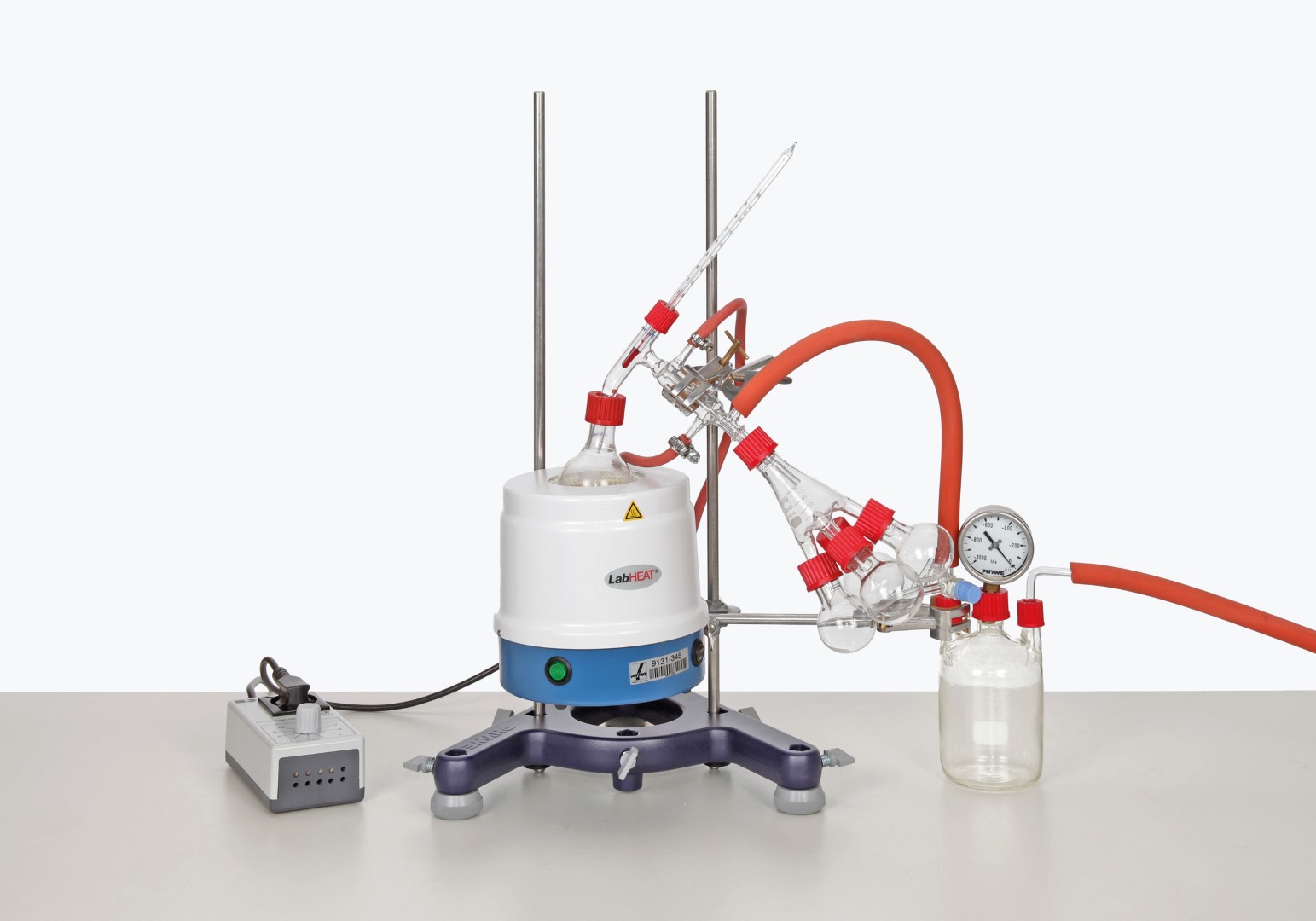Principle
In the first part of the experiment, benzaldehyde disproportionates under the effect of alkalis to alcohol-soluble benzyl alcohol and water-soluble benzoic acid that precipitates when the aqueous solution is acidified. In the second part, benzaldehyde reacts with ethylene glycol to form a cyclic acetal. This ethylene acetal is resistant against basic and oxidising reagents. In an acid medium, it once again splits up into its original products. It is because of these characteristics that cyclic acetals are used for blocking the carbonyl function in preparative, organic chemistry.
Benefits
- Experiment including Abbe refractometer
- Controlled and safe heating via heating mantle and power regulator
- Secure connection of the items by GL screw joint system
Tasks
- Show the Cannizzaro reaction of benzaldehyde under basic conditions.
- Prepare benzaldehyde ethylene acetal from benzaldehyde with ethylene glycol.
Learning objectives
- Cannizzaro reaction
- Benzaldehyde
- Acetals
- Distillation
- Micro distillation
Necessary accessories
- Precision balance 620g/0.001g


